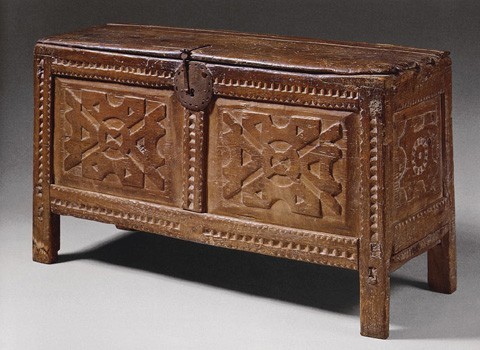
Caja, New Mexico, 1760–1800. Pine. H. 30", W. 55", D. 19". (Courtesy, Sotheby’s.)
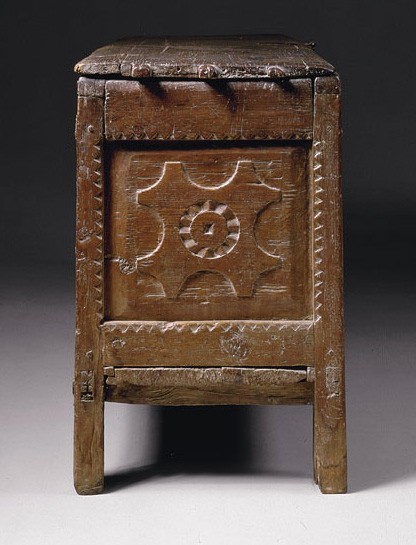
Detail of the side of the caja illustrated in fig. 1.
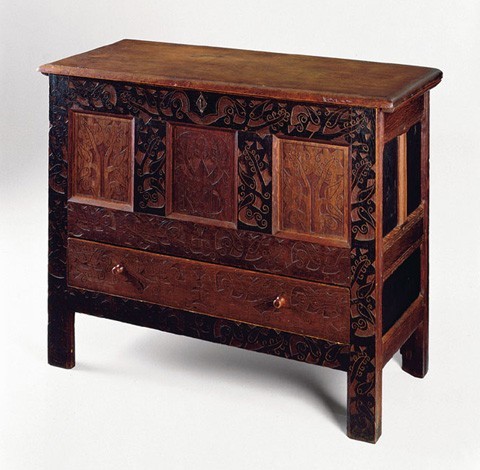
Chest, Hadley-Hatfield area of Massachusetts, ca. 1710. Oak with pine. H. 45", W. 36", D. 19 3/4". (Courtesy, Chipstone Foundation; photo, Gavin Ashworth.)
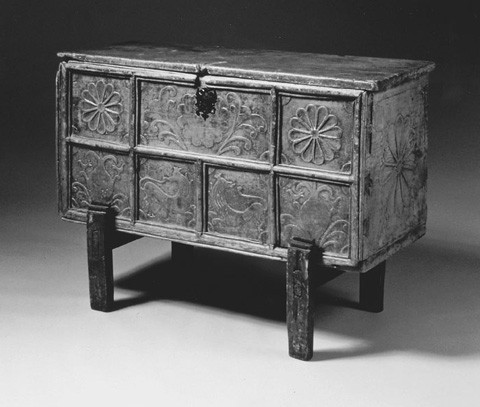
Caja, New Mexico, 1760–1800. Pine. H. 23", W. 47", D. 21". (Courtesy, Colorado Springs Fine Arts Center, Taylor Museum.)

Caja, New Mexico, 1760–1800. Pine. H. 22 1/2", W. 34 1/2", D. 17 1/4". (Courtesy, Sotheby’s.)

Caja, New Mexico, 1760–1800. Pine. H. 32 1/2", W. 37 1/2", D. 17". (Courtesy, Sotheby’s.)

Saint Anthony of Padua and the Infant Jesus, Santo Domingo Pueblo, New Mexico, 1693–1710. Painted hide. 46 1/2" x 26 3/8". (Courtesy, Division of Cultural History, National Museum of American History, Smithsonian Institution.)
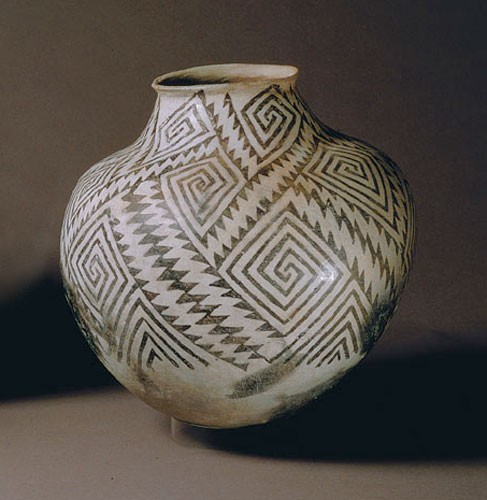
Tusayan storage jar, New Mexico, 1100–1300 A.D. Earthenware with black-on-white decoration. H. 14". (Courtesy,
Sotheby’s.)
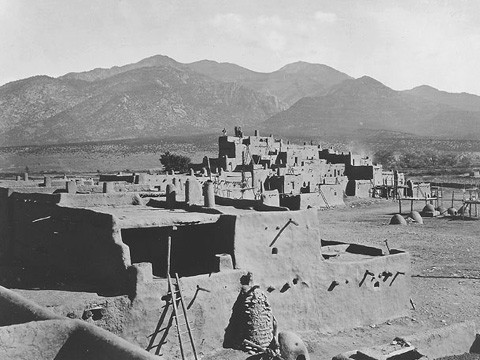
Taos Pueblo, Taos, New Mexico. (Courtesy, Museum of New Mexico.) This image shows the Taos Pueblo as it appeared about 1880.
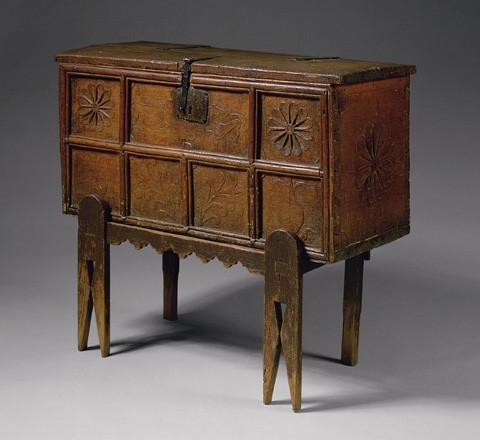
Caja, New Mexico, 1760–1800. Pine. H. 22", W. 44", D. 201/2". (Courtesy, Sotheby’s.)
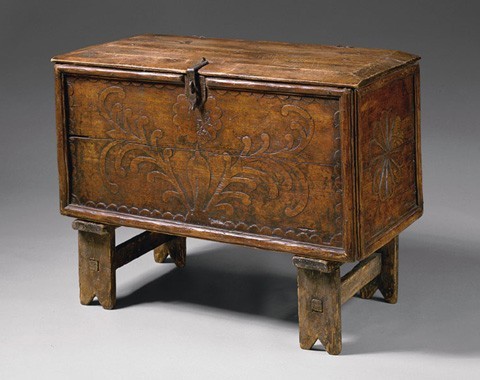
Caja, New Mexico, 1760–1800. Pine. H. 18 1/2", W. 37", D. 19". (Courtesy, Sotheby’s.)

Detail of an interior wall of La Hacienda de los Martinez, Taos, New Mexico, ca. 1805. (Photo, Anthony Richardson.)
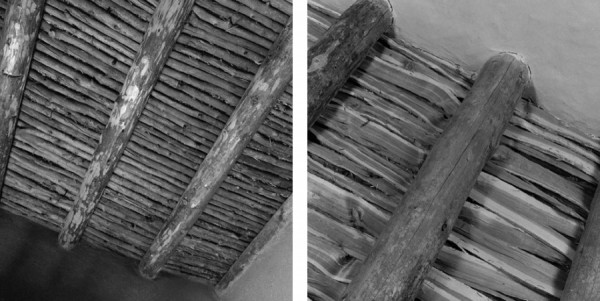
Detail of the ceilings of La Hacienda de los Martinez, Taos, New Mexico, ca. 1805, showing (left) aspen or cottonwood latillas (poles) and (right) split cedar or pine rajas (boards). (Photo, Anthony Richardson.)
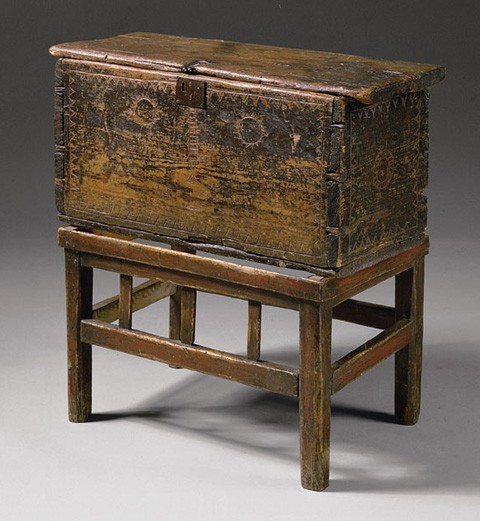
Caja, New Mexico, 1750–1800. Pine. H. 15 1/2", W. 33", D. 13 1/2". (Courtesy, Sotheby’s).
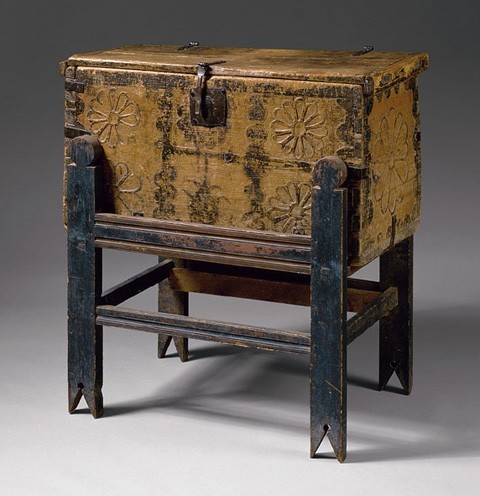
Caja, New Mexico, 1760–1800. Pine. H. 20 1/2", W. 38 1/2", D. 19". (Courtesy, Sotheby’s).

Refectory table, Spain, 1600–1700. Oak. Dimensions not recorded. (Courtesy, Isabella Stewart Gardner Museum, Boston.)

Chest, Spain, 1600–1700. Oak. Dimensions not recorded. (Courtesy, Hispanic Society of America, New York.)
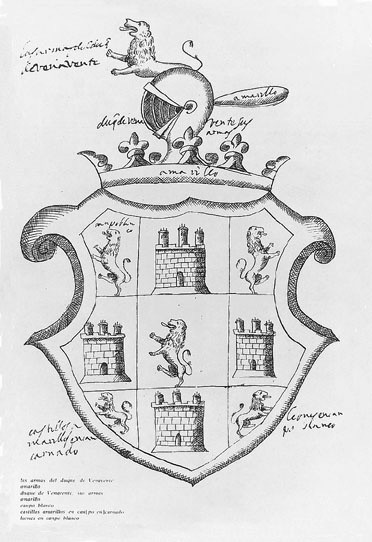
Design for a coat-of-arms, Spain, Origen y Armas de varios nobles de Espána. (Courtesy, Biblioteca de la Universidad de Zaragoza, ms. no. 198.)
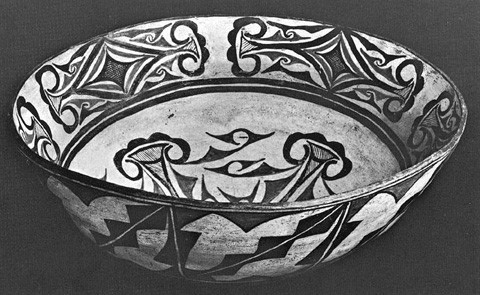
Zuni bowl, New Mexico, ca. 1890. Earthenware with polychrome decoration. H. 6 1/2", Diam. 16 1/2". (Courtesy, Margorie and Charles Benton, Evanston, Illinois.)

Kiva interior, Meshongnovi Hopi village, Arizona, c. 1902. (Courtesy, Field Museum.)
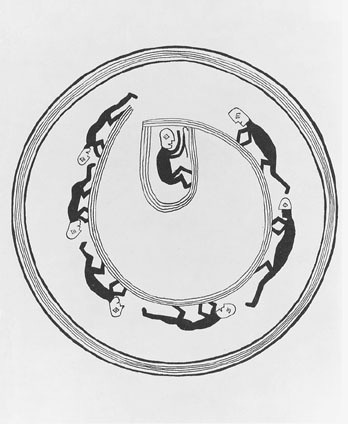
Design from Mimbres bowl, New Mexico, 900–1200 A.D. Earthenware with black-on-white decoration. Dimensions not recorded. (Courtesy, Patricia Carr, Mimbres Mythology, 1979.)
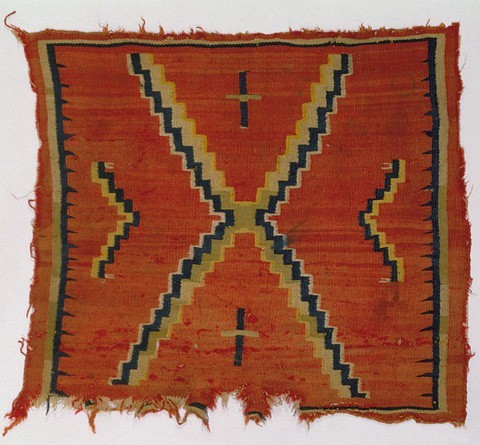
Navajo saddle blanket, New Mexico, 1880–1900. 32" x 28". (Courtesy, Museum of Indian Arts and Culture/Laboratory of Anthropology, Museum of New Mexico.)
